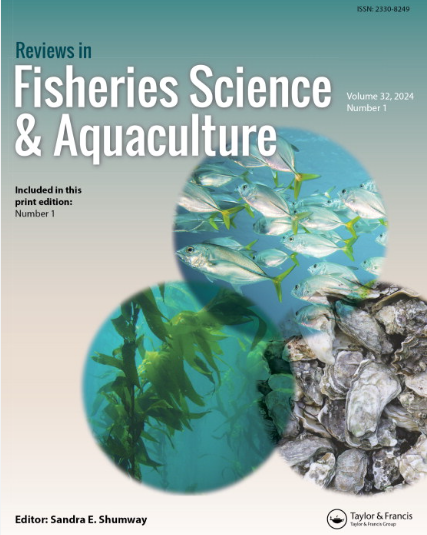养殖对虾基因组学研究现状及应用
IF 6.4
1区 农林科学
Q1 FISHERIES
引用次数: 2
摘要
摘要对虾养殖多年来取得了巨大的进步。包括下一代测序(NGS)技术在内的现代生物技术工具的应用,已经彻底改变了具有重要商业价值的水产养殖物种的基因组学。利用通过开发遗传资源获得的知识,目前正在世界范围内实施针对所需经济性状的遗传改良方案。这些遗传资源是了解和制定水产养殖品种选择性育种策略以提高生产性能的基础。鉴于对虾养殖中严重的疾病暴发,以及在分子水平上对关键的生物、生殖和生理功能缺乏了解,开发和充分利用现有基因组资源已成为至关重要的问题。本文综述了近年来在转录组学、基因组学、DNA标记和连锁图谱等遗传资源开发方面的最新进展,这些遗传资源在未来具有重要商业价值的对虾物种的选育计划中具有潜力。本文章由计算机程序翻译,如有差异,请以英文原文为准。
The Genomics of the Farmed Shrimp: Current Status and Application
Abstract Shrimp aquaculture over the years has made tremendous progress. The application of modern biotechnological tools, including next-generation sequencing (NGS) techniques, has revolutionized the genomics of commercially important aquaculture species. Genetic improvement programmes targeting desired economic traits are being implemented worldwide with knowledge gained through development of genetic resources. These genetic resources form the basis to understand and develop the strategy for selective breeding of aquaculture species for improved performance. In view of serious disease outbreaks in shrimp aquaculture, and lack of understanding of key biological, reproductive and physiological functions at the molecular level, it has become critical to develop and exploit the available genomic resources to the full potential. This review presents recent progress in development of genetic resources such as transcriptomics, genomics, DNA markers and linkage maps having future potential in selective breeding programmes for commercially important penaeid species.
求助全文
通过发布文献求助,成功后即可免费获取论文全文。
去求助
来源期刊

Reviews in Fisheries Science & Aquaculture
FISHERIES-
CiteScore
25.20
自引率
0.90%
发文量
19
期刊介绍:
Reviews in Fisheries Science & Aquaculture provides an important forum for the publication of up-to-date reviews covering a broad range of subject areas including management, aquaculture, taxonomy, behavior, stock identification, genetics, nutrition, and physiology. Issues concerning finfish and aquatic invertebrates prized for their economic or recreational importance, their value as indicators of environmental health, or their natural beauty are addressed. An important resource that keeps you apprised of the latest changes in the field, each issue of Reviews in Fisheries Science & Aquaculture presents useful information to fisheries and aquaculture scientists in academia, state and federal natural resources agencies, and the private sector.
 求助内容:
求助内容: 应助结果提醒方式:
应助结果提醒方式:


